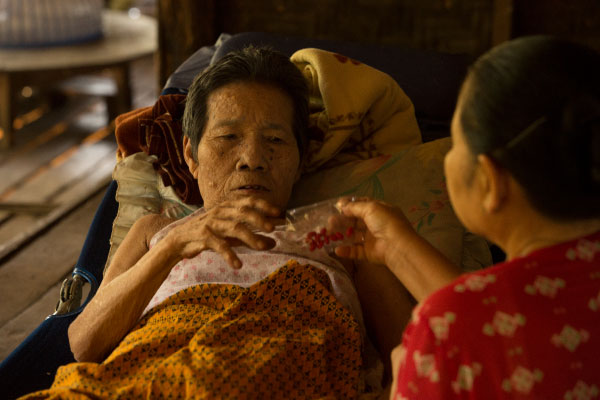Good Health

Help for People to Get Good Health
India is a hub for pharmaceutical and biotechnology industries; world-class scientists, clinical trials and hospitals yet country faces daunting public health challenges like child undernutrition, high rates of neonatal and maternal mortality, growth in noncommunicable diseases, high rates of road traffic accidents and other health related issues.
Health issues
Malnutrition refers to deficiencies, excesses or imbalances in a person’s intake of energy and/or nutrients. The term malnutrition covers 2 broad groups of conditions. One is undernutrition – which includes stunting (low height for age), wasting (low weight for height), underweight (low weight for age) and micronutrient deficiencies or insufficiencies (a lack of important vitamins and minerals). The other is overweight – overweight, obesity and diet-related noncommunicable diseases (such as heart disease, stroke, diabetes and cancer).
Diseases such as dengue fever, hepatitis, tuberculosis, malaria and pneumonia continue to plague India due to increased resistance to drugs.
In 2011, India developed a ‘totally drug-resistant’ form of tuberculosis. India is the highest TB burden country in the world in terms of absolute number of incident cases that occur each year. TB primarily affects people in their most productive years of life. While two-thirds of the cases are male, TB takes disproportionately larger toll among young females, with more than 60 per cent of female cases occurring by the age of 34 years. In 2018, the TrueNat test, an indigenously developed technology under the “Make in India” initiative, was deployed in about 350 PHCs. This led to marked increase in access to highly sensitive molecular tests with augmented capacity for resistance testing at the peripheral level.
India has witnessed huge progress in the health status of its population since independence. The transition has been seen in economic development, nutritional status, fertility and mortality rates and consequently, the disease profile has changed considerably. Although great efforts have been done to control the communicable diseases, but they still contribute significantly to disease burden of the country. Decline in disability and death from communicable diseases has been accompanied by a gradual shift to, and accelerated rise in the prevalence of chronic non-communicable diseases such as cardiovascular disease, diabetes, chronic obstructive pulmonary disease, cancers, mental health disorders and injuries. Indians are at particularly high risk for atherosclerosis and coronary artery disease. This may be attributed to a genetic predisposition to metabolic syndrome and adverse changes in coronary artery vasodilation.
A major issue for women in India is that few have access to skilled birth attendants and fewer still to quality emergency obstetric care. In addition, only 15 per cent of mothers receive complete antenatal care and only 58 per cent receive iron or folate tablets or syrup. Women’s health in India involves numerous issues. Some of them include the following:
- Malnutrition : The main cause of female malnutrition in India is the tradition requiring women to eat last, even during pregnancy and when they are lactating.
- Breast cancer : One of the most severe and increasing problems among women in India, resulting in higher mortality rates.
- Maternal mortality : Indian maternal mortality rates in rural areas are one of the highest in the world.
Rural India contains over 68% of India’s total population, and half of all residents of rural areas live below the poverty line, struggling for better and easy access to health care and services. Health issues confronted by rural people are many and diverse – from severe malaria to uncontrolled diabetes, from a badly infected wound to cancer. Postpartum maternal illness is a serious problem in resource-poor settings and contributes to maternal mortality, particularly in rural India. A study conducted in 2009 found that 43.9% of mothers reported they experienced postpartum illnesses six weeks after delivery. Furthermore, because of limited government resources, much of the health care provided comes from non profits such as The MINDS Foundation.
Rapid urbanization and disparities in urban India
India’s urban population has increased from 285 million in 2001 to 377 million (31%) in 2011. It is expected to increase to 535 million (38%) by 2026 (4). The United Nations estimates that 875 million people will live in Indian cities and towns by 2050. If urban India were a separate country, it would be the world’s fourth largest country after China, India and the United States of America. According to data from Census 2011, close to 50% of urban dwellers in India live in towns and cities with a population of less than 0.5 million. The four largest urban agglomerations Greater Mumbai, Kolkata, Delhi and Chennai are home to 15% of India’s urban population.
Child health and survival disparities in urban India
Analysis of National Family Health Survey Data for 2005–06 (the most recent available dataset for analysis) shows that within India’s urban population – the under-five mortality rate for the poorest quartile eight states, the highest under-five mortality rate in the poorest quartile occurred in UttarPradesh (110 per 1,000 live births), India’s most populous state, which had 44.4 million urban dwellers in the 2011 census followed by Rajasthan (102), Madhya Pradesh (98), Jharkhand (90) and Bihar (85), Delhi (74), and Maharashtra (50). The sample for West Bengal was too small for analysis of under-five mortality rate. In Uttar Pradesh was four times that of the rest of the urban populations in Maharashtra and Madhya Pradesh. In Madhya Pradesh, the under-five mortality rate among its poorest quartile was more than three times that of the rest of its urban population.
